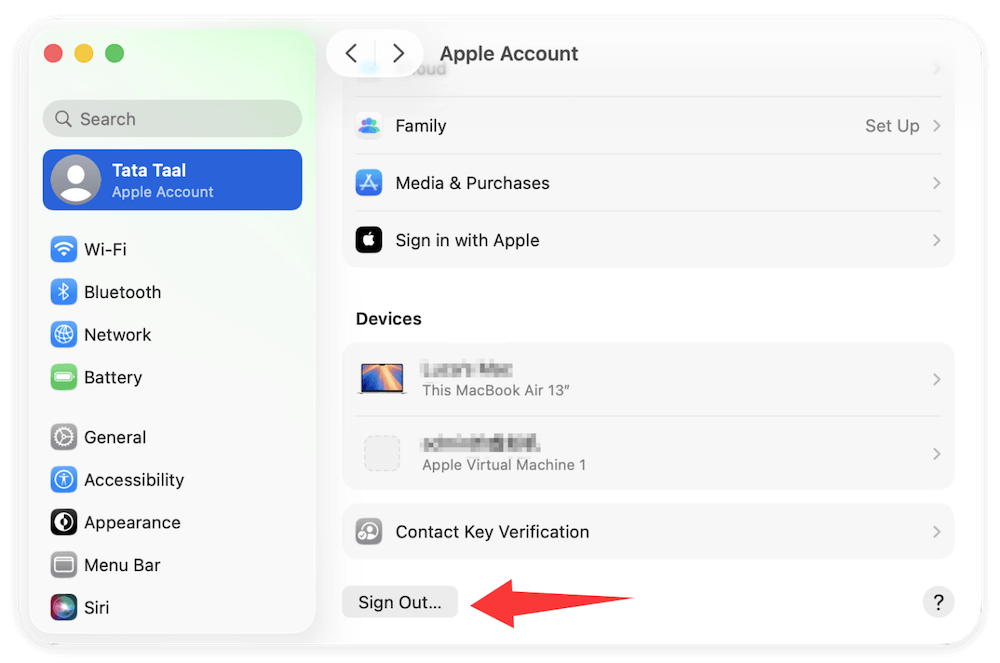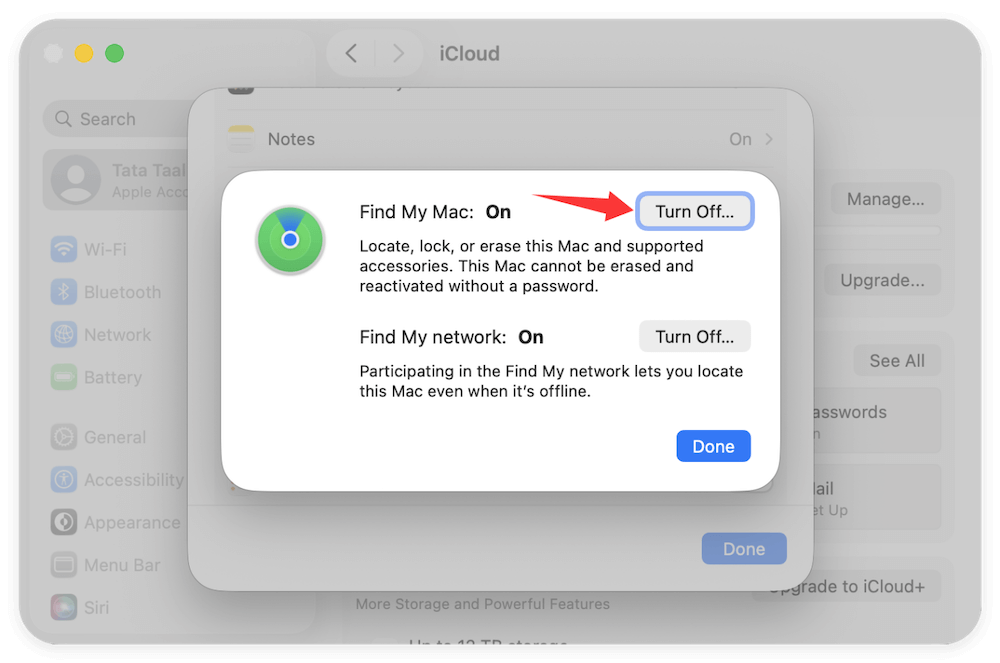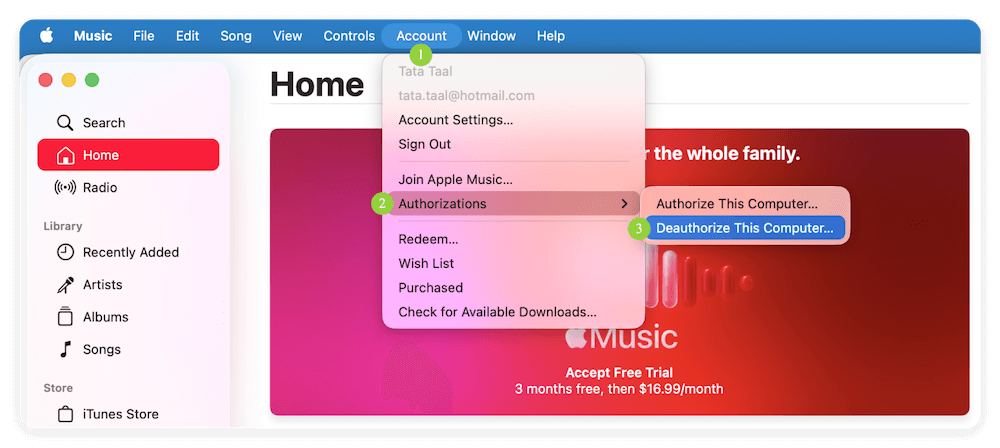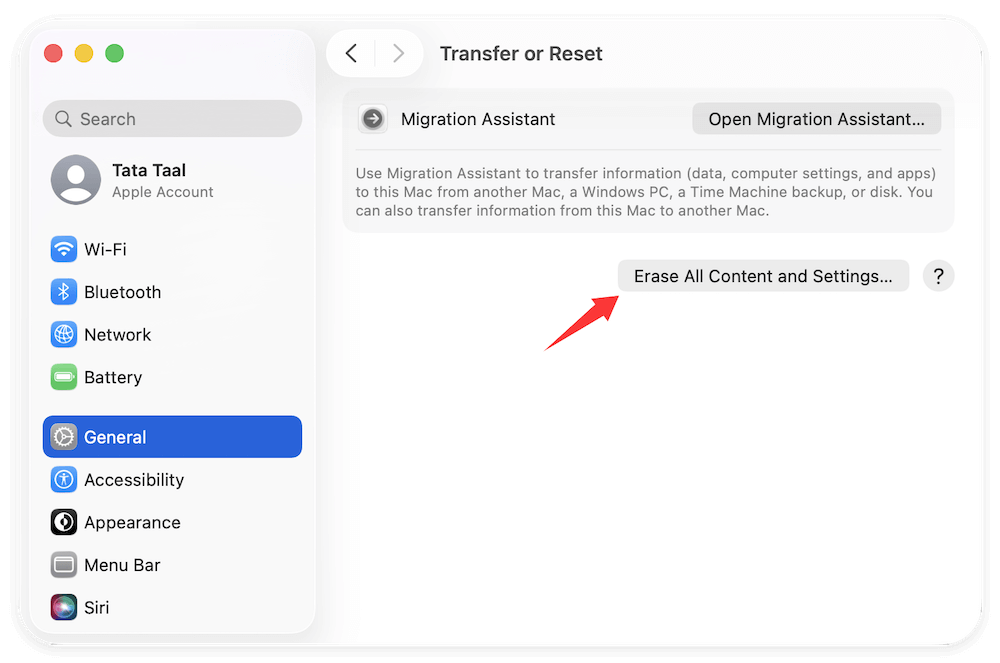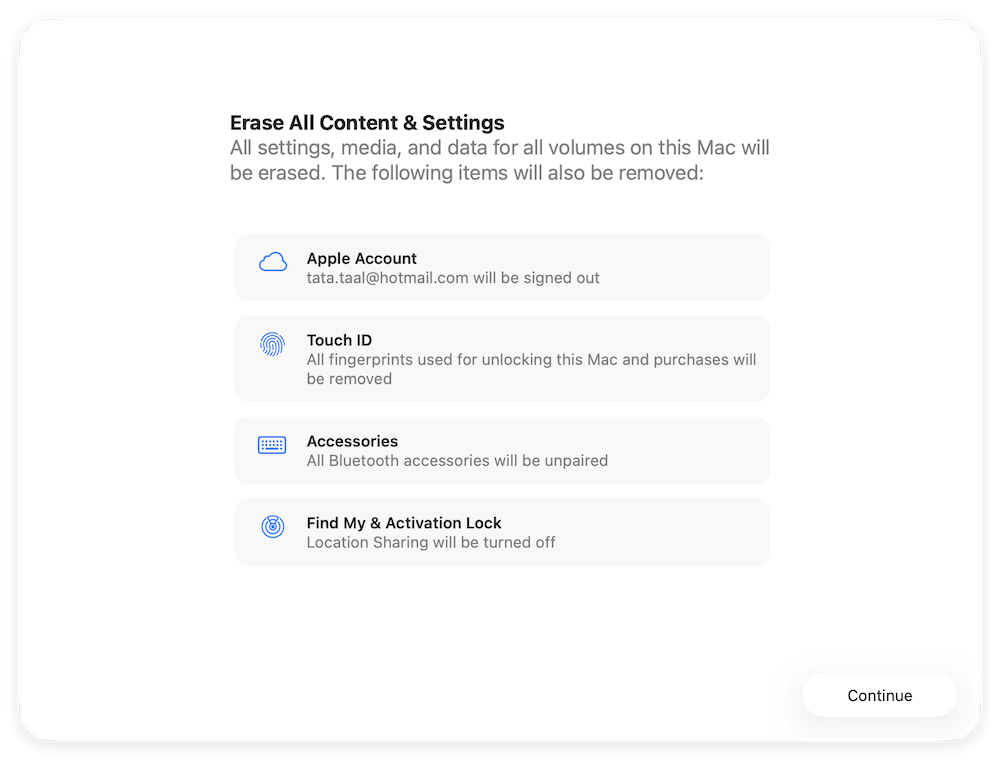Before we start: A factory reset can refresh macOS Tahoe and remove all data if you wanted. However, it's not enough if you will sell the reset Mac as the data is still recoverable. Use Donemax Data Eraser for Mac to wipe the data to avoid data breaches.
PAGE CONTENT:
Every Mac user, sooner or later, comes across a situation where a factory reset becomes the most effective solution. Whether your system is slowing down, plagued by errors, infected with persistent bugs, or you simply want a clean slate before selling your device, performing a reset ensures your Mac runs like new.
With the release of macOS Tahoe, Apple has once again refined its operating system, offering users enhanced security, improved performance, and a more polished experience. But even with these upgrades, there are times when starting fresh is the best option.
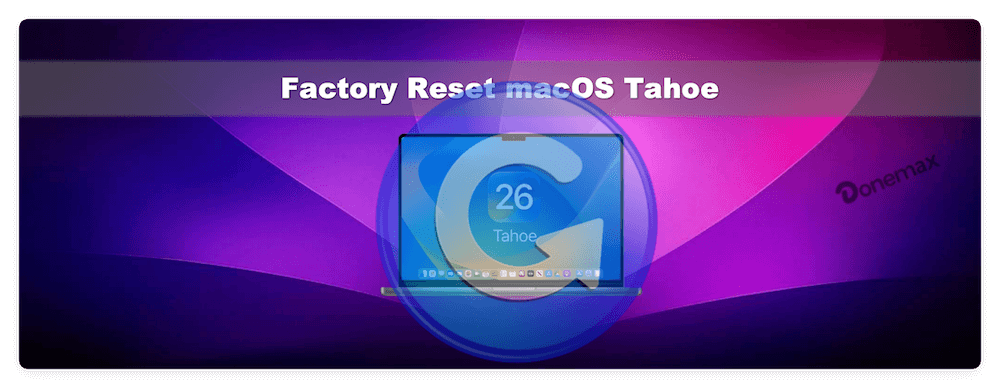
This comprehensive guide will walk you through how to factory reset macOS Tahoe step by step. You'll also learn the preparations you need to make before resetting, multiple reset methods, common troubleshooting fixes, and what to do after the process.
Preparations Before Factory Reset macOS Tahoe
Before you dive straight into wiping your Mac, a few precautions are essential to avoid losing important files or facing complications later.
1. Back Up Your Data
Since a factory reset completely erases your internal drive, creating a backup is non-negotiable. You have several options:
- Time Machine (Recommended)
Time Machine is Apple's built-in backup tool. By connecting an external drive, you can create a full system backup that can later be restored onto your Mac. This method is especially useful if you want to return to your exact setup after the reset.
- Connect an external drive.
- Go to System Settings > General > Time Machine.
- Select your external drive and start the backup process.
![factory reset macOS Tahoe]()
- iCloud Backup
If you mainly rely on documents, photos, and iCloud Drive, storing everything in the cloud may be enough. Sign in to your Apple ID and ensure iCloud syncing is enabled. You can later download files directly after reinstalling macOS Tahoe.
![factory reset macOS Tahoe]()
- Manual Backup to External Storage
For users who prefer a selective backup, copying important folders (such as Documents, Downloads, Desktop, and Photos) onto a USB or external SSD is a quick solution.
- Clone the Mac
If the Mac will be sold or donated, you can make a full clone to keep all data, programs, and settings. Donemax Disk Clone for Mac can make a bootable clone and keep all information intact.
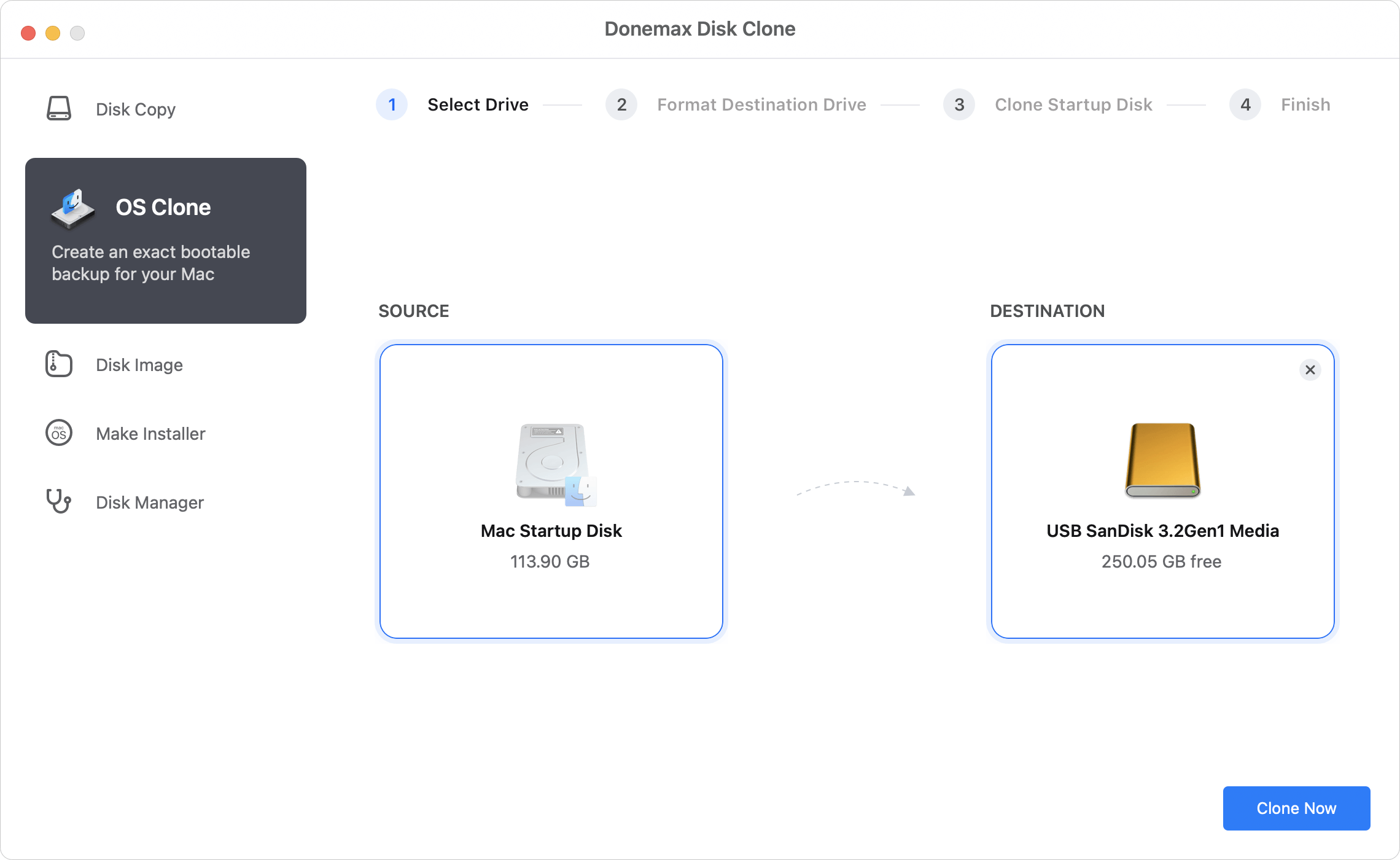
💡 Tip: Double-check hidden files (e.g., saved projects, app configurations, or personal archives). Sometimes the most important files are buried in folders you rarely open.
2. Sign Out of Apple Services
Apple ties your Mac closely to your Apple ID for security purposes. If you plan to sell, give away, or trade in your Mac, forgetting this step could lock the new owner out of the device.
- Sign Out of iCloud:
Go to System Settings > Apple ID > Sign Out. When prompted, decide whether you want to keep a copy of your iCloud data on the Mac (for most, it's best to erase).
![factory reset macOS Tahoe]()
- Turn Off Find My Mac:
This is crucial, as leaving it on keeps your Mac linked to your Apple ID. Go to System Settings > Apple ID > iCloud > Find My Mac and disable it.
![factory reset macOS Tahoe]()
- Sign Out of iMessage and FaceTime:
Open the Messages app, then go to Settings > iMessage > Sign Out. Do the same in the FaceTime app.
![factory reset macOS Tahoe]()
- Deauthorize in Apple Music/iTunes:
If you use Apple Music or iTunes, deauthorize the computer under Account > Authorizations > Deauthorize This Computer.
![factory reset macOS Tahoe]()
3. Ensure Stable Power and Internet Connection
Resetting and reinstalling macOS Tahoe requires uninterrupted access to power and Wi-Fi. If the process is interrupted:
- Your Mac could be left in an incomplete state, making it unbootable.
- Reinstallation of macOS might fail midway.
To avoid problems:
- Plug your Mac into a reliable power source (don't rely solely on battery).
- Connect to a stable Wi-Fi network, or better yet, use a wired Ethernet connection if available.
4. Note Down Essential Information
Before wiping your system, make sure you have the following:
- Apple ID & Password: Needed for reinstalling macOS or restoring data from iCloud.
- Wi-Fi Network Details: If your Mac doesn't reconnect automatically, you'll need your network name and password.
- Software License Keys: If you use paid third-party apps (like Microsoft Office or Adobe Creative Cloud), make sure you have your login credentials or license codes handy.
How to Factory Reset macOS Tahoe (Step-by-Step)
The traditional method to reset involves booting into Recovery Mode, erasing the internal drive, and reinstalling macOS Tahoe.
Step 1: Enter Recovery Mode
- Shut down your Mac completely.
- Turn it back on while holding the Power button (Apple Silicon), release once the message "Loading startup options" appears. Then select Options and click Continue. (for Intel Macs, just press and hold Command + R until Apple logo or the recovery screen appears)
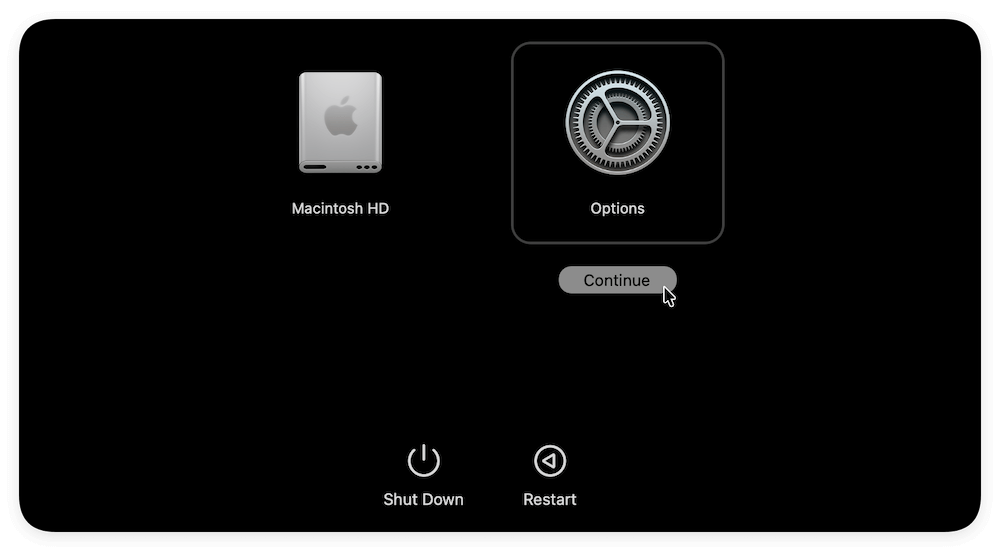
Step 2: Erase Mac Using Disk Utility
- From the Recovery menu, select Disk Utility.
- Choose your startup disk (commonly named Macintosh HD).
- Click Erase.
- Select APFS (default file system for modern macOS).
- Confirm to wipe the disk.
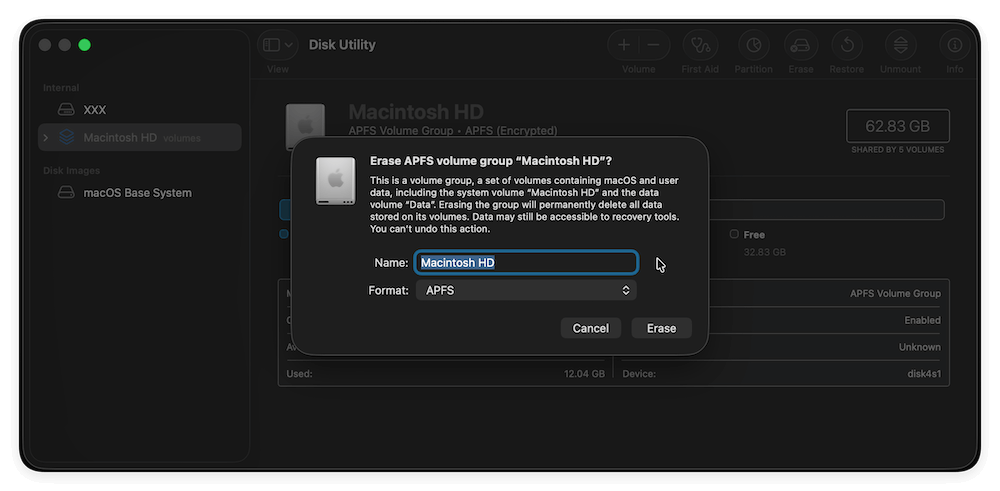
Step 3: Reinstall macOS Tahoe
- Exit Disk Utility.
- From the Recovery menu, select Reinstall macOS.
- Follow on-screen prompts to download and install a fresh copy of macOS Tahoe.
- Wait for the installation to complete — this can take 30–90 minutes depending on internet speed.
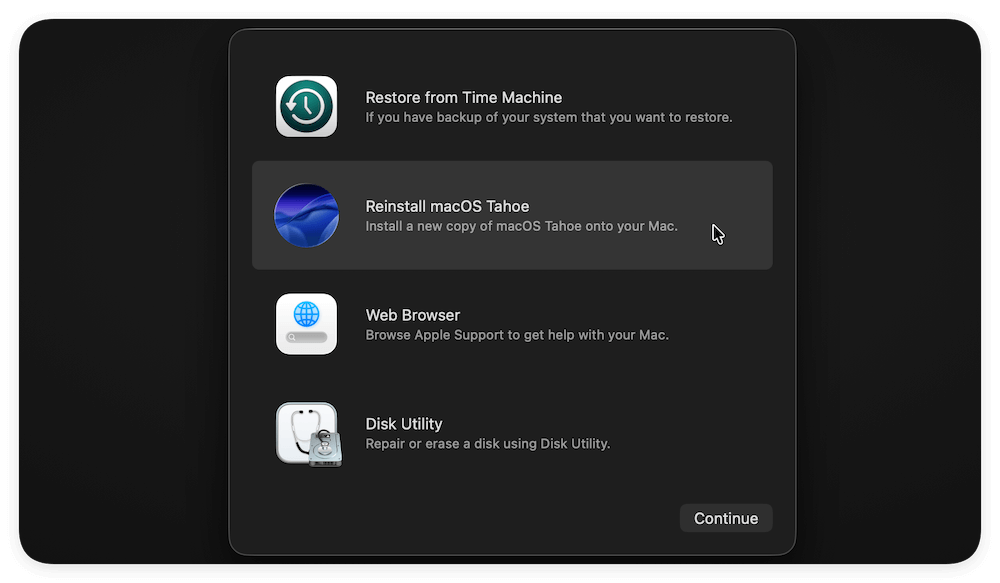
Step 4: Complete Setup
Once macOS Tahoe is installed, your Mac will restart into the Setup Assistant. Here you can:
- Set up your Mac as new.
- Restore data from Time Machine or iCloud (if you backed up earlier).
Alternative Method: Using "Erase All Content and Settings"
Apple has introduced a faster, simpler way to reset Macs equipped with Apple Silicon or T2 Security Chip.
Here's how to use it on macOS Tahoe:
- Open System Settings.
- Navigate to General > Transfer or Reset.
![factory reset macOS Tahoe]()
- Click Erase All Content and Settings.
![factory reset macOS Tahoe]()
- Enter your administrator password.
- Follow the prompts to erase your Mac.
![factory reset macOS Tahoe]()
This method automatically signs you out of iCloud, disables Find My Mac, and removes all your data without manually using Recovery Mode. It's the recommended option if supported by your device.
Troubleshooting During Factory Reset macOS Tahoe
Even with Apple's streamlined reset process, issues can occasionally arise. Below are common problems and their fixes.
1. Mac Won't Enter Recovery Mode
- Double-check the key combination:
- Apple Silicon: Hold Power until "Options" appears.
- Intel Macs: Hold Command + R immediately after pressing power.
- If it still fails, try Option + Command + R to boot into Internet Recovery.
2. Issues Erasing the Disk
- If Disk Utility won't erase, ensure you're selecting the top-level drive (not just the volume).
- If the erase fails, boot into Internet Recovery and try again.
3. Problems Reinstalling macOS Tahoe
- If installation is stuck: Restart and try again.
- For verification errors: Ensure your date and time are correct in Terminal (use date command).
- If internet recovery is too slow, consider creating a bootable USB installer for macOS Tahoe.
After Factory Reset macOS Tahoe: Setting Up Your Mac
Once the reset is complete, you'll be greeted with the macOS Tahoe welcome screen. From here, you have two choices:
1. Set Up as New
Ideal if you want a completely fresh start or if the Mac is being sold/given away. However, before you give the reset Mac to another hand, it's essential to wipe the data to avoid data leakages.
After the factory reset, the removed personal files are still recoverable. With professional data recovery software, it's easy to recover the removed data while factory resetting the Mac.
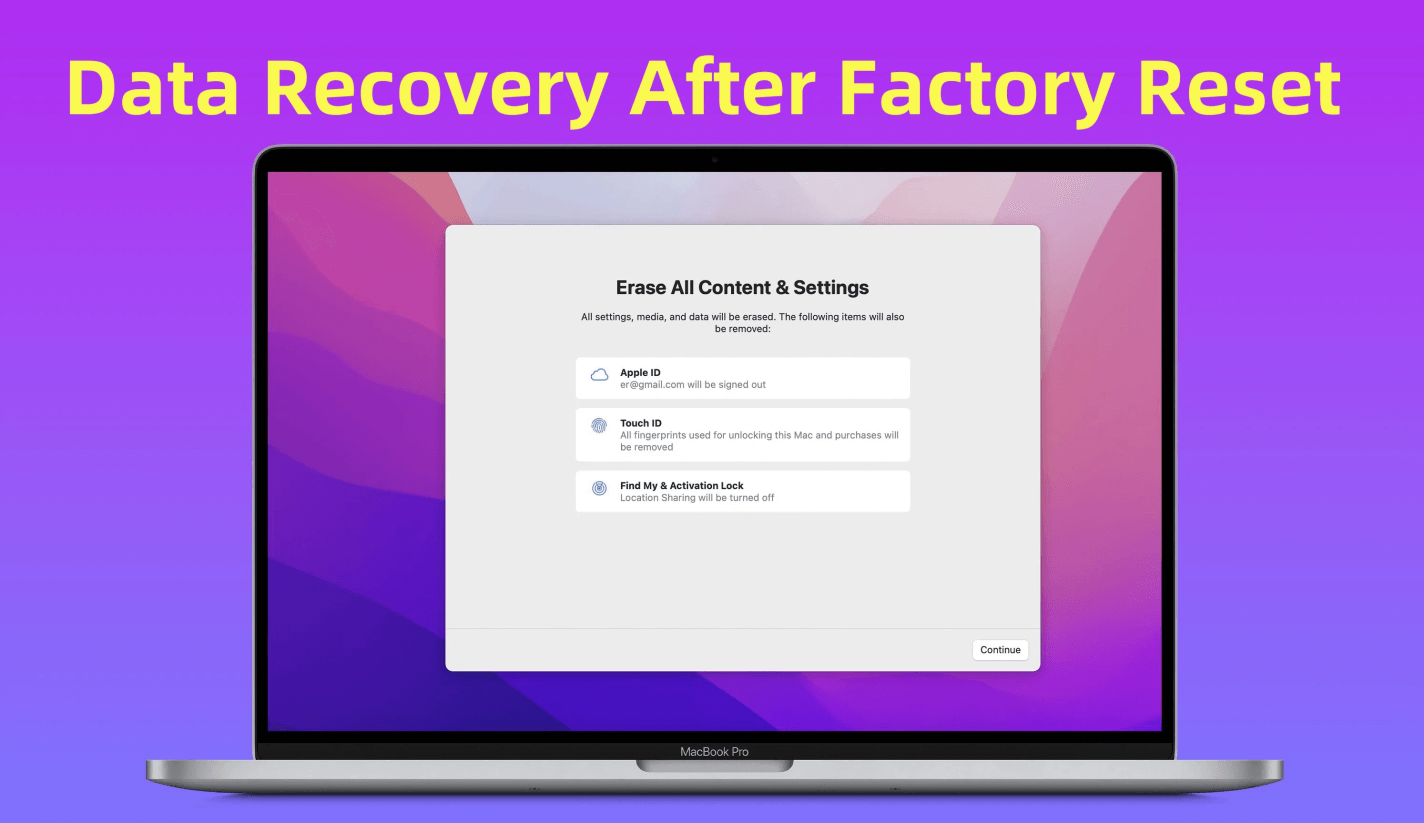
Is the data recoverable after factory reset a Mac?
With professional data recovery software, it's possible to recover the data even after a factory reset or reinstallation on Mac.
How to avoid data recovery after factory reset on Mac? You can use the professional data recovery software Donemax Data Eraser for Mac to wipe the removed data. The software can ensure the wiped data is no longer recoverable.
Donemax Data Eraser for Mac
- Reliable and safe data wiping tool for Mac.
- Wipe data permanently to avoid data recovery.
- Erase data with international data erasure standards.
Here you can use the Erase Free Space mode in the software to wipe the removed sensitive data after a factory reset on macOS Tahoe.
Step 1. Download and run the software on the Mac after a factory reset. Choose the mode Erase Free Space and choose your Mac system disk. Click Erase Now button and go to next step.
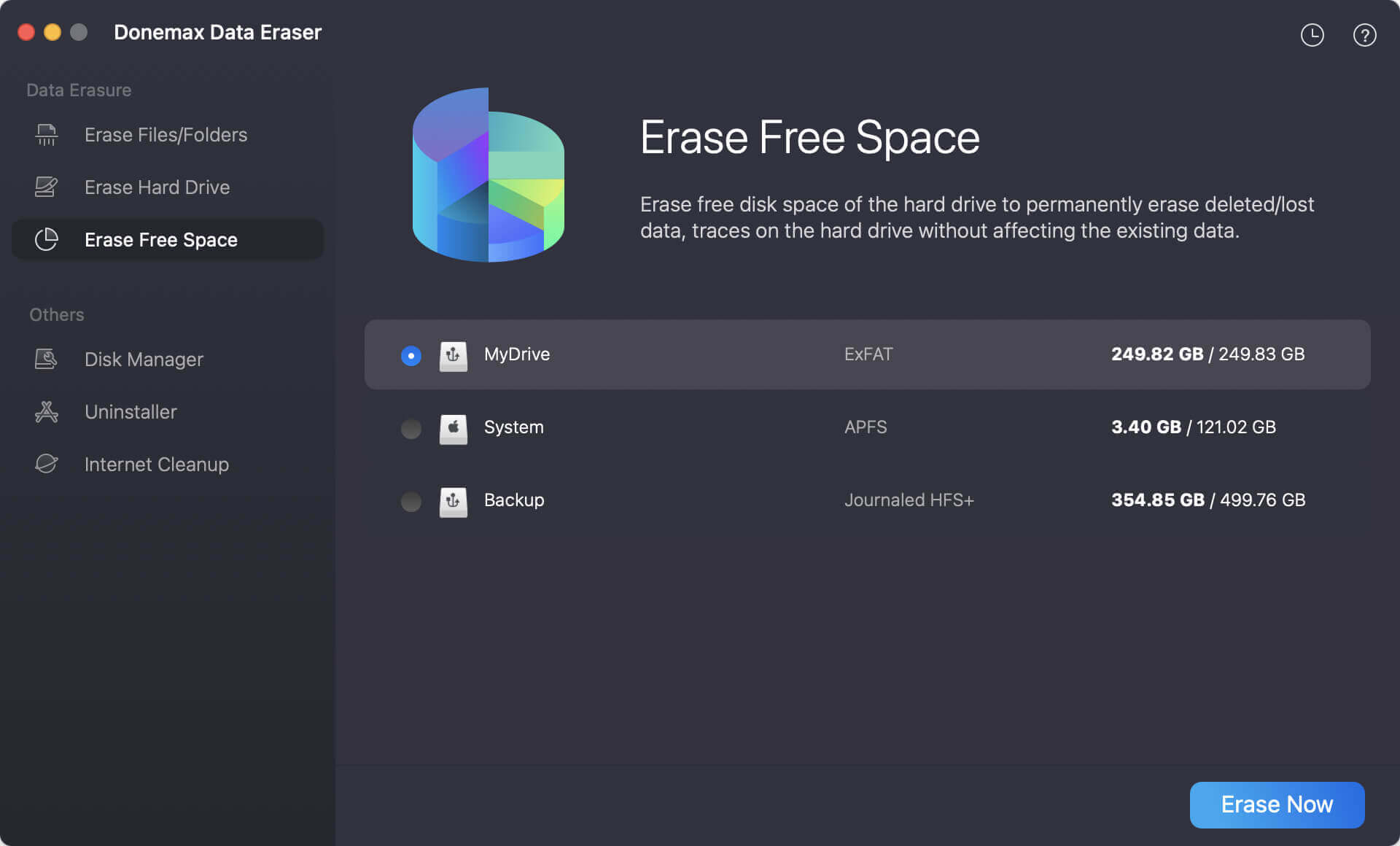
Step 2. You need to select a data erasure algorithms to wipe the deleted data from the free space on the selected drive.

Step 3. After selecting and confirming the data erasure standard, click on the button Continue and the software will start to wipe the removed data from the hard drive free space.
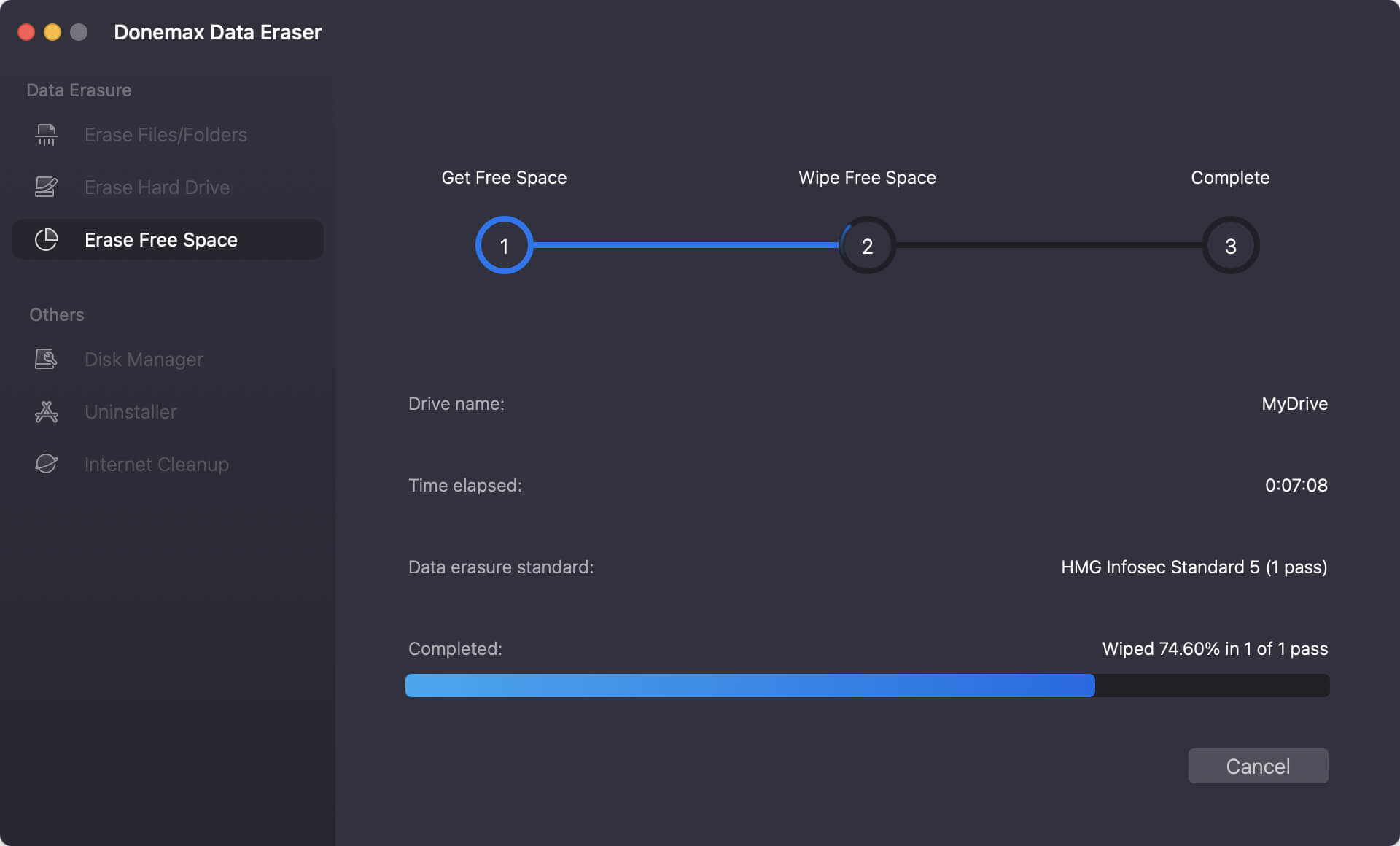
2. Restore from Backup
If you plan to keep the Mac, restore your files using:
- Time Machine backup.
- iCloud Drive.
- Manual transfer from an external drive.
Reinstall Essential Applications
- Download your must-have apps from the App Store or third-party sources.
- Ensure software is compatible with macOS Tahoe.
Update to Latest Patches
After setup, check for software updates via: System Settings > General > Software Update.
This ensures you're running the most stable and secure version of Tahoe.
When a Factory Reset May Not Be Enough
Sometimes, a factory reset doesn't resolve the underlying issue. Consider these cases:
- Hardware Issues: If your Mac is still sluggish, the problem may be with the SSD, RAM, or battery.
- Persistent Startup Problems: Could indicate corrupted hardware components rather than software.
- Unstable Performance After Reset: Seek professional support.
In such scenarios, it's best to contact Apple Support or visit an Apple Authorized Service Provider.
Best Practices After Reset
- Keep regular backups to avoid losing files again.
- Use iCloud Keychain for secure password management.
- Regularly update macOS Tahoe for security patches.
- Avoid unnecessary apps that clutter your system.
Conclusion
Performing a factory reset on macOS Tahoe is straightforward if you prepare properly and follow the steps carefully. Whether you choose the traditional Recovery Mode method or the simpler "Erase All Content and Settings" option, the process will give your Mac a fresh start.
Just remember:
- Back up your files first.
- Sign out of your Apple ID.
- Keep your Mac plugged in and connected to Wi-Fi.
By following this guide, you'll have a clean installation of macOS Tahoe, ready for a new owner or a new beginning for yourself.


Donemax Data Eraser for Mac
100% safe and powerful Mac data erasure program. It offers certified data erasure standards including U.S. Army AR380-19, DoD 5220.22-M ECE to securely and permanently erase data from Mac HDD/SSD and external storage devices, making data recovery impossible.
Related Articles
- May 14, 2025How to Factory Reset a M1 Chip Mac?
- Oct 20, 2025How to Permanently Shred A Folder on Mac?
- Aug 21, 2023How to erase your Mac with Disk Utility & What to do if Disk Utility can't Erase a Drive?
- Jul 01, 2025Free WD or Seagate Disk Formatting Tool for Mac
- May 07, 2024How to Wipe Free Disk Space on Mac?
- Oct 10, 2025Format an External Hard Drive for macOS Tahoe

Maria
Maria is one of the senior writers & editors of Donemax who lives and works in Sydney, Australia. She loves PC, Mac and Internet Technology. She has 6 years of writing articles about data recovery on PC/Mac, disk cloning solution, data eraser and computer OS optimization, etc. She is also interested in testing various software and digital products.

Gerhard Chou
In order to effectively solve the problems for our customers, every article and troubleshooting solution published on our website has been strictly tested and practiced. Our editors love researching and using computers and testing software, and are willing to help computer users with their problems



